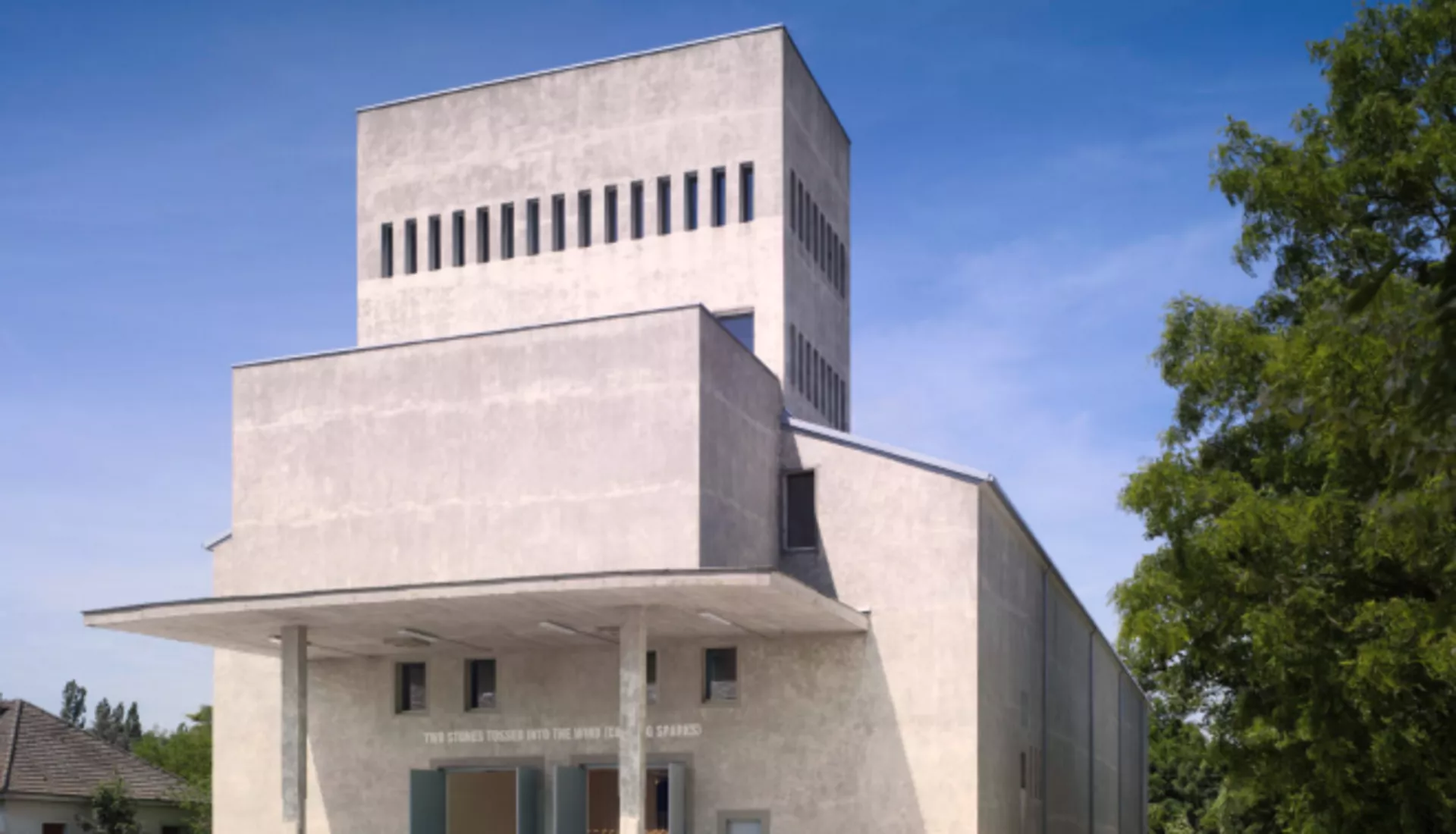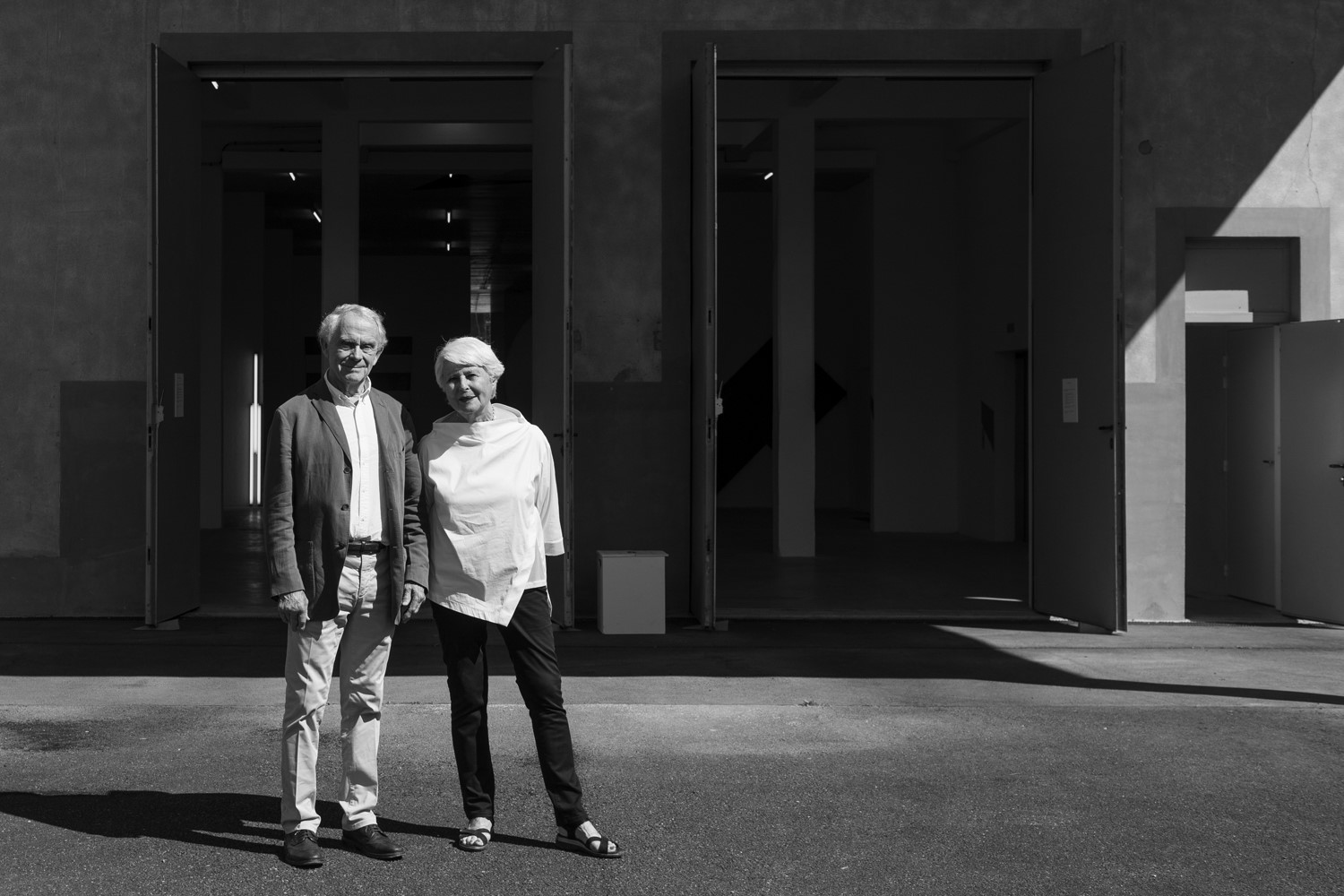
Le Silo: a former agro-industrial site turned art venue
Contemporary art aficionados Françoise and Jean-Philippe Billarant have built an exceptionally harmonious and cohesive collection. A selection of pieces is currently on display at the Silo — a former agro-industrial site turned art venue, a 45-minute drive north-west of Paris. Our Head of Art Wealth Management, Laurent Issaurat, went to meet the two extraordinary collectors.

Françoise & Jean-Philippe Billarant
Contemporary art aficionados
How did your art collection journey begin?
It started in the mid-70s after visiting several museums of old art. We felt a need to understand and live the art of our time. We did not plan to become collectors; we simply wanted to connect with major artists. So we headed into the unknown, going to contemporary art exhibitions in galleries, art centres and museums. We met artists, art historians, critics and dealers, all of whom expanded our knowledge of contemporary art. We understood that, just like any other discipline, art is something you learn and discover for yourself. We spent six or seven years exploring numerous artistic movements and narrowed down our choices to minimalism, conceptual and geometric abstract art.
How would you describe your collection today? Who are the signature artists?
Our collection is not eclectic, nor does is represent the current art landscape. It is known for its cohesiveness. Unlike sampling, we support some 50 artists by acquiring works from each of them. Our artists from the US include Carl Andre, Robert Barry, Lawrence Weiner, Sol Le Witt, Dan Flavin, Donald Judd, Joseph Kosuth, Richard Serra, On Kawara, Ian Wilson, John Mc Cracken and Peter Downsbrough. We have works from artists established in France : Daniel Buren, François Morellet, Michel Parmentier, Claude Rutault, Bertrand Lavier and Philippe Thomas. Outside France, we have pieces from Swiss artists Niele Toroni; Alan Charlton from the UK; Wolfgang Laib and Jochen Lempert from Germany; and the Dutch artist Stanley Brouwn etc. Among our younger generation, we support Dove Allouche, Véronique Joumard, Krijn de Kooning, Felice Varini, Philippe Decrauzat, and Angela Detanico who, together with Rafaël Lain, were one of the four finalists of the Prix Marcel Duchamp 2024. And we absolutely must mention two more young artists, David Horvitz from the US and Charles Sandison from Scotland.
What makes you so passionate about minimalist art?
We are passionate about art that goes back to constructivism movements like Bauhaus and De Stijl. In other words, art as an idea and a process of creation, while applying minimalist systems and principles in the spirit of “less is more”. It is both a clear departure from what came before, and a descendant of the greats like Malevitch, Rodchenko, Mondrian and Brancusi. Discovering the groundbreaking contribution of each artist to the great edifice of art is quite remarkable.
How do you decide on your acquisitions?
We choose our pieces together. When we see something by an artist we know and whose work we already own, budget permitting, we may well buy it right away if it completes a particular ensemble. For artists we don’t know, we take more time. We learn more about their practice and, most importantly, we try to meet them to so we can find out who they are and how they describe their work.
Have you ever sold any of your pieces?
We haven't sold anything in 35 years. In the early days, the theme of our collection wasn’t yet fully formed, meaning we collected through trial and error. We sold the pieces that didn't fit in with the spirit of the collection, as well as the pieces of artists, like Thomas Schütte and Sigmar Polkesuch, whose increase in value prevented us from acquiring other pieces.
Tell us about the Silo
We chose the Silo to give artists the opportunity to show their work to as many people as possible. We acquired the former grain silo in 2007 and it was transformed according to the architectural vision of first Dominique Perrault, then Xavier Prédine. When it opened in 2011, its exhibition surface was over 2,000 m2. We present a new exhibition every two years of around 100 featured works from our collection. We have just inaugurated our seventh such exhibition which is open for private visits by appointment, mainly on weekends.
How do you design your exhibitions? Do you work with external curatorial designers?
We design the entire display. We present the artists and make a point of showing works that have never been exhibited before. We use a maquette of about two metres long to represent, at scale, the two floors of exhibition space and all the pieces. That’s how we place the works, while identifying the intellectual, formal or relationship-based links between the artists. The spacing and the layout is the result of a long thought process and multiple iterations. We then hand over the installation to professionals.
What are the main running costs for a venue like the Silo?
Other than the purchase and renovation costs, most of our overheads go towards running and maintaining the venue. We also budget for the exhibitions we organise every two years for which we have a team of five people over a six-week period, and for the vernissage which some 500 people attend. The repair and restoration of pieces are quite rare.
Any advice for first-time collectors?
First and foremost: time is irreplaceable. You must take your time to study numerous pieces without rushing into anything. Travel. Meet the artists. Visit museums and art centres. Secondly, we avoid falling in love with unfamiliar pieces or artists, or works that, at first glance, only ‘resemble’ something we like. And thirdly, we must talk to the artist whose work we are seeing for the first time. Experience has shown how important it is to understand their approach — a sine qua non before moving forward. These conversations and visits, and the research and reflection that follow, are fundamental to our buying decisions.
What are your plans for Silo?
We the legacy to continue. We’re working on it!
DISCLAIMER :
This document has no contractual value. It is not intended to provide an investment service such as investment advice, a related investment service, arbitration advice or legal, accounting or tax advice from Société Générale Private Banking France (‘SGPB France’), which cannot therefore be held liable for any decision taken by an investor solely on the basis of its content. SGPB France undertakes neither to update nor to modify it.
Before making any investment decision, please review the details of the documentation for the service or product being considered, including any associated risks, and consult your legal and tax advice. If the document is consulted by a French tax non-resident, he or she will have to ensure with his or her legal and tax advisors that he or she complies with the legal and regulatory provisions of the jurisdiction concerned. It is not intended for distribution in the United States, or to a U.S. tax resident, or to any person or jurisdiction for which such distribution would be restricted or unlawful.
The past performance information that may be reproduced is not intended to guarantee future performance. These future performances are therefore indicative. The return to investors will vary depending on market performance and the shelf life of the investment. Future performance may be subject to tax, which depends on your present and future personal situation.
Societe Generale has put in place a policy to manage conflicts of interest. SGPB France has put in place (i) a policy to handle complaints made by its customers, available on request from your private banker or on its website and (ii) a policy to protect personal data (https://www.privatebanking.societegenerale.com/fr/protection-donnees-personnelles/). At any time and without charge, you have the right to access, rectify, limit processing, erase your data and the right to object to their use for the purposes of commercial prospecting by contacting our Data Protection Officer by email (protectiondesdonnees@societegenerale.fr). In the event of a dispute, you can lodge a complaint with the Commission Nationale de l’Informatique et des Libertés (CNIL), the supervisory authority responsible for compliance with personal data obligations.
This document is issued by Societe Generale, a French bank authorized and supervised by the Prudential Control and Resolution Authority, located at 4 Place de Budapest, 75436 Paris Cedex 09, under the prudential supervision of the European Central Bank (‘ECB’) and registered with ORIAS as an insurance intermediary under number 07 022 493, orias.fr. Societe Generale is a French public limited company with a capital of EUR 1 003 724 927.50 on 17 November 2023, whose registered office is located at 29 boulevard Haussmann, 75009 Paris, and whose unique identification number is 552 120 222 R.C.S. Paris (ADEME FR231725_01YSGB). More details are available on request or at www.privatebanking.societegenerale.com/. This document may not be communicated or reproduced in whole or in part, without the prior written consent of SGPB France.